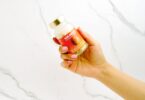A great smile stems from healthy teeth. Healthy teeth result from solid oral hygiene habits.
An oral health routine that delivers results involves several steps. For the best results, complete the routine twice a day. Keep in mind that all steps aren’t required on the same day such as flossing.
It takes an average of five minutes to complete the routine each time. In the grand scheme of things, it’s a drop in the bucket timewise.
Allowing a few minutes each day to properly clean your teeth renders lifelong results. You’re less likely to develop cavities, periodontal disease, and the need for extensive dental surgery.
It’s only necessary to floss once a day. Anyone who has experienced a stubborn food particle stuck in between their teeth knows that floss comes in handy.
The following are seven things you need to know about flossing your teeth.
1. Floss Daily
While brushing should occur twice a day, it’s only necessary to floss once daily. Using floss more than once a day could irritate your gums.
Floss got its start as early as 1815. Others say that floss did exist in the early 1800s, but it didn’t become widely used until 1882. Floss evolved post-World War II. It has also evolved in the early 2000s.
Oral health care product manufacturers produce a waxed version to help individuals slide it through their teeth more easily. Plus, individuals who have dental implants, crowns, and braces can use it too.
Floss is safe to use daily, and it’s only necessary once a day.
2. Why It’s Important
Studies show that brushing your teeth with a toothbrush is effective. In addition, more efficient toothbrushes improve the process. If you opt for a toothbrush with replaceable heads, each head type accomplishes something different. Some whiten and others floss while brushing.
Despite the advances in toothbrushes, they only clean 70% of a person’s mouth. The bristles don’t reach in between the teeth.
Flossing is important to clean within the crevices. It renders a cleaner mouth.
3. Flossing Cleans the Areas Brushing Misses
The bristles of a toothbrush only reach so far. Even the most innovative brush heads have limits.
You control the thread and pull it in between your teeth. Individuals who develop periodontal disease experience gums that bleed. If they don’t floss, it’s often the film and plaque in between the teeth that kick off the disease.
A solid teeth care routine includes brushing and flossing. Mouthwash and water flossing benefit your mouth too. They clean every crevice in your mouth.
4. Floss Before Brushing
Professionals recommend flossing before brushing. It makes sense to floss during your nighttime brushing routine. You can target food particles still in your mouth from breakfast, lunch, and dinner.
This way they don’t reside in your mouth overnight.
The logic is that flossing before brushing improves the effectiveness of brushing.
For more on a recommended bedtime routine, JS Dental Lab offers a checklist here. The list provides worthwhile teeth care information too.
5. Use the Right Length
You’ll find dental floss in packs that measure the product in yards and meters. One brand packs 43.7 yards in each pack.
When you floss, cut 18 to 20 inches to use. Therefore per pack, you receive almost 30 uses.
Cutting 18 to 20 inches of floss ensures that you don’t double-dip it. Although you can’t see the bacteria sticking to the floss, it’s there. If you double-dip the floss, you risk spreading the bacteria throughout your mouth.
6. Use the Right Technique
Floss is great for removing food particles from the crevices in between your teeth. Sometimes you can feel them. Other times you don’t realize that the particles remained within your teeth after your meal.
As you floss in between your teeth start with one end and work your way to the other.
Avoid using any increment twice. If your gums bleed, it’s not a good idea to use that portion again. You don’t see the bacteria on the material, but it’s there. Thus, don’t reuse those portions.
By using good flossing techniques, you’ll receive the best results.
7. Browse the Variety
Several retail stores dedicate an entire aisle to teeth care products. When you shop for your toothpaste and mouthwash, you’ll see several varieties. It’s no different from dental floss.
First, it’s available in waxed and unwaxed. Then, it’s available in different flavors. It started with mint. In 2021, the flavors of floss evolved to include bacon.
The flavor helps encourage individuals to continue flossing daily. Plus, it’s fun to use floss that leaves behind a bacon flavor if that’s your persuasion.
Conclusion
A total oral hygiene routine involves several steps. Among them is flossing. When you floss your teeth, you reach the 30% that brushing alone doesn’t reach. It’s important to remove the plaque, bacteria, and film that hides in between your teeth too. Turn flossing into a habit for the best results.
Picture photo by Photo by Dalila Dalprat








